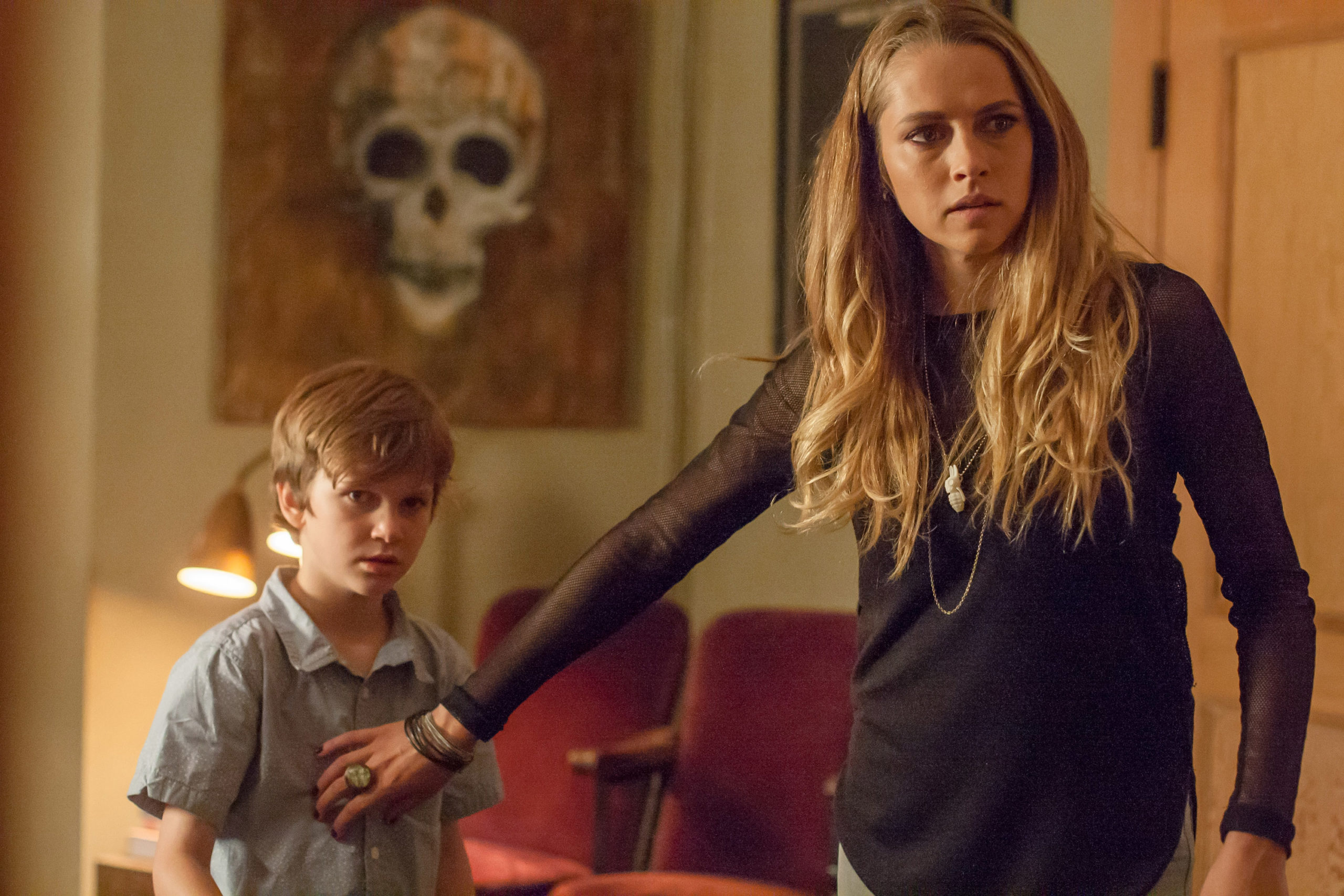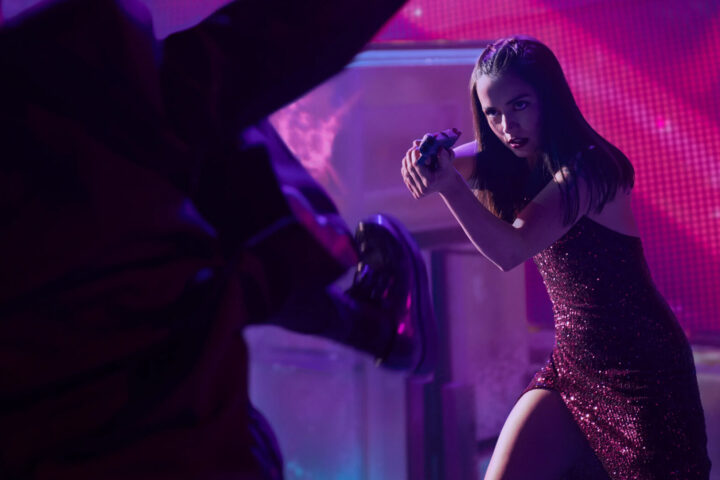The modestly creepy Lights Out is a sometimes-effective horror picture with two things going for it—the introduction of an intriguing movie villain and a terrific performance from Mario Bello as a distraught widow being manipulated by a vengeful entity. In a movie all about one thing—our fear of the dark—director David Sandberg raises hairs the old fashioned way, with things that simply go bump in the night. Or at least in the dark.
Teresa Palmer is Los Angeles Goth chick Rebecca, who when we first meet her is tossing devoted boyfriend Martin (Alexander DiPersia) out of her apartment after sex due to commitment issues; she never lets a guy sleep over. The screenplay is lite on both, to say the least, and not nary a suggestion of careers, habits or dimensions beyond the scope of the plot.
Across town, her young, half-brother Martin (Gabriel Bateman) lives with depressed mother Sophie (Maria Bello), off the deep end after being abandoned by one husband and grieving the death of her second.
Turns out the cause of his death and the reason Martin can’t sleep, causing child protective services to intervene, is Sophie’s nightly communion with a mysterious being only able to survive in the dark, and prone to kill anything that becomes a threat to the pair’s symbiosis.
When the creature follows Martin and Rebecca to her pad and declares its name to be “Diana,” it triggers a memory of madness from Rebecca’s childhood where she experienced the same night terrors.
Who—or what—is Diana? Is she matter or spirit? Is she holding Sophie captive? And what is their history? The mystery, when revealed, is pretty creepy, and Diana is genuinely scary, particularly when her history and motivations are revealed. Could that mystery have something to do with why Sophie keeps the house dark, shades drawn and light bulbs removed?
Lights Out looks great courtesy of cinematographer Marc Spicer, finding innumerable ways to play with light and dark, which means life or death here. Later in the film he stages a gorgeously lit basement revelation by way of black light, bathed in blue.
While Sandberg effectively mounts his horror sequences, some early acted scenes between Palmer and DiPersia feel slackly staged. Ditto Palmer’s initial scenes with Bateman, including one on the family porch where her arms are awkwardly stretched to him, most unnaturally.
None of this would work without the two central performances, and while sunny blonde Teresa Palmer, a good actress, seems miscast as an edgy, wayward Goth daughter in platform boots and heavy mascara (Jessica Chastain did this effectively in the supernatural thriller Mama) she is emotionally adept throughout.
But it’s a gritty Maria Bello who delivers the movie with a sad, broken performance. Smartly playing horror as drama, Bello takes what could have been stock and elevates it to a believable portrait of a woman undone. A dinner confrontation between mother and daughter is so good, in fact, it could past muster in a more serious picture.
And it is this part of the movie, a commentary on depression and an inability to recover even after you cry for help, which sets this moderately effective horror film apart. Sandberg knows that if we aren’t invested in the people, we won’t be in the scares, and he gives Lights Out issues of abandonment, prescription pill addiction, alienated parents and adult children, child welfare, relationship dynamics and the notion that if you don’t face your demons, they’ll come for you.
But it’s the mysterious Diana who provides the thrills. In a horror movie landscape overstuffed with underwhelming CGI ghosts, Diana is refreshingly old school—a demon hiding the shadows, in our own dark recesses, waiting to pounce if we don’t come into the light.
2 1/2 stars.



